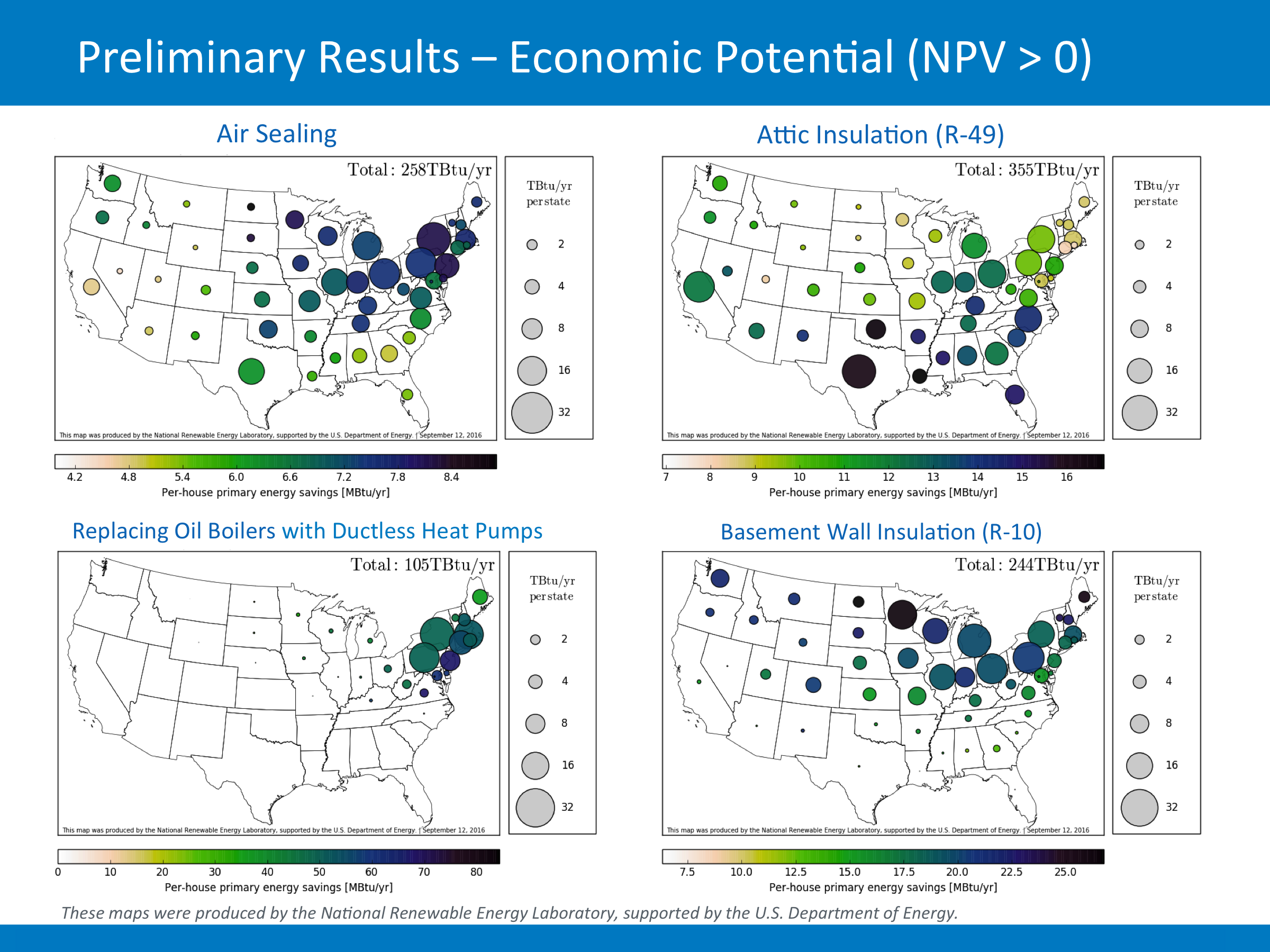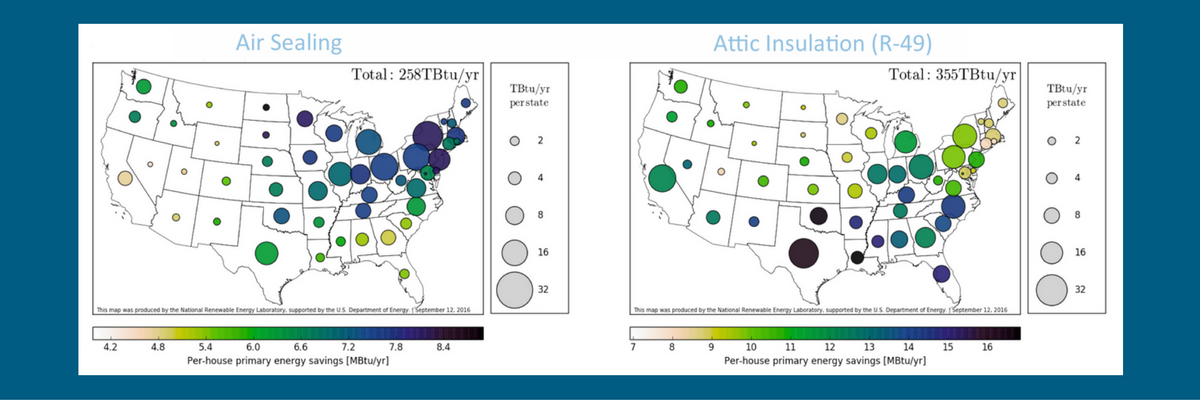by Susan Buchan
Residential building stock has one unifying trait: it’s different everywhere. Houses vary by climate zone, age, fuel type, construction practices, occupant behavior – just about everything. These variations have long hampered the accuracy of predicting savings for existing homes. With support from the U.S. Department of Energy, researchers at NREL are developing ResStock – a computer model that increases the granularity of analysis for the entire U.S. residential housing stock to an unprecedented level.
 The result: a predictive model of energy savings and return on investment ratios tailored to individual homes that considers location (there are 216 climate locations), fuel type (i.e., electric, gas or oil heat), envelope and building component characteristics (windows, insulation levels, HVAC systems) and local energy costs.
The result: a predictive model of energy savings and return on investment ratios tailored to individual homes that considers location (there are 216 climate locations), fuel type (i.e., electric, gas or oil heat), envelope and building component characteristics (windows, insulation levels, HVAC systems) and local energy costs.
Sifting through these factors (and associated probability distributions), a large number of representative homes emerge that more accurately predict the likely range of existing shell and system components (taking into account replacement over time of some building components such as HVAC systems). Statistical sampling weights are applied to the representative homes, and home types that do not exist (at all, or in statistically significant numbers) are removed – for example, a home in Phoenix built in 2000 with a full basement and oil heat. Then, EnergyPlus simulations are performed on NREL’s Peregrine supercomputer. (A future option will allow other users to run their own scenarios utilizing cloud computing.)
Results include the characteristics and consumption of baseline homes. Also, results for various efficiency upgrades include the aggregated technical potential – the theoretical energy savings potential using available technology, or economic potential – the savings potential remaining after filtering by cost-effectiveness (for example, net present value of >$0, or a simple payback period of <5 years). Energy upgrade packages are applied for enclosure, HVAC, water heating, lights, and appliances (in combination or alone), and the results analyzed for cost effectiveness. These results can be “sliced and diced” to a level of detail that gives, for example, the percentage of the number of homes in a location of a certain size and vintage that would benefit from a certain upgrade. The data give utility program managers and regulators the ability to dive deep into the savings and cost-effectiveness of measures. We are looking forward to learning more about the ramifications of this new modeling tool.
For more information:
–A High-Granularity Approach to Modeling Energy Consumption and Savings Potential in the U.S. Residential Building Stock (Aug. 2016; 8 pages)
–Residential Energy Efficiency Potential Analysis (Dec. 2015; 24 slides)
–(Updated 3/21/17): See a publication documenting the ResStock analysis conducted in support of the U.S. Department of Energy’s Quadrennial Energy Review 1.2 & Home Improvement Catalyst (Electric End-Use Energy Efficiency Potential in the U.S. Single-Family Housing Stock, authored by NREL’s Eric Wilson, Craig Christensen, Scott Horowitz, Joseph Robertson, and Jeff Maguire).
–Susan Buchan is E4TheFuture’s Director of State Policy
